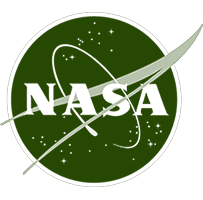Get 'WISE' About Teaching Infrared

JPL's Art Hammon, seen in infrared.
News • December 3rd, 2009
By Art Hammon
Art Hammon develops NASA/JPL resources for K - 12 schools that focus on space exploration, science and mathematics. Before working at JPL, Art was a middle and high school science teacher for 25 years in New Hampshire.
The Wide-field Infrared Survey Explorer, or WISE, is scheduled to launch into space in December 2009 on a mission to use its infrared telescope to survey the entire sky. This means the mission will use heat given off by objects in space to "see" them.
The WISE mission is expected to find a wide range of as-yet undetected objects in our solar system and beyond. This should include about 100,000 new asteroids in the main asteroid belt; hundreds of near-Earth objects (comets or asteroids whose orbits take them relatively close to Earth); cool stars; planet-building disks in the Milky Way galaxy; and the universe's most luminous galaxies.
Teaching Resources:
A good way to bring a cool mission like WISE into the classroom is to focus on how we use infrared to study the universe.
Kindergarten - 3rd Grade
Infrared Zoo
http://coolcosmos.ipac.caltech.edu/image_galleries/ir_zoo/index.html
See animals by the heat they give off. Follow that with the Space Place activity below that shows infrared pictures.
Space Place Infrared Images
http://spaceplace.jpl.nasa.gov/en/kids/sirtf1/sirtf_action.shtml and http://spaceplace.jpl.nasa.gov/en/kids/aster_do1.shtml
Young children's activities about infrared light.
Infrared Hide-and-Seek
http://coolcosmos.ipac.caltech.edu/cosmic_games/hide_seek/index.html
This activity is just for fun for younger children.
5th - 8th Grades
The Herschel Infrared Experiment
http://coolcosmos.ipac.caltech.edu/cosmic_classroom/classroom_activities/herschel_example.html
The Herschel Experiment was a famous example of early research that revealed the complex nature of light.
SOFIA Mission: Active Astronomy Guide
http://www.sofia.usra.edu/Edu/materials/activeAstronomy/activeAstronomy.html
Several downloadable guides explain the role of infrared light in astronomy and provide classroom activities that demonstrate how infrared light works.
What Is It?
http://coolcosmos.ipac.caltech.edu/cosmic_games/what/img1.html
Just for fun!
Spectroscopy Game
http://coolcosmos.ipac.caltech.edu/cosmic_games/spectra/
Although the WISE mission will not use spectroscopy to study stars in the infrared, this activity shows how different light waves from stars – including infrared -- can help astronomers identify features or chemical compositions of the star without having to travel to the star.
9th - 12th Grades
SOFIA Mission: Active Astronomy Guide
http://www.sofia.usra.edu/Edu/materials/activeAstronomy/activeAstronomy.html
Several downloadable guides explain the role of infrared light in astronomy and provide classroom activities that demonstrate how infrared light works.
MultiWavelength Milky Way
http://mwmw.gsfc.nasa.gov/
This Web site brings together several sets of image data of the Milky Way galaxy in different parts of the electromagnetic spectrum. Some tutorial pages explain the nature of light, the structure of the Milky Way and how maps of the Milky Way are made from Earth.




